THE MUSCLE BOYS, PART V.
 Sunday, February 18, 2024 at 07:43AM
Sunday, February 18, 2024 at 07:43AM By Peter M. DeLorenzo
Detroit. Beginning in the late 50s and running through the mid-70s, sports car racing - particularly here in the U.S. - was captivated and dominated by V8-powered machines that barked their intent at race tracks all over the country. Sure, back in those days, SCCA (Sports Car Club of America) events were heavily populated by small-bore sports cars like Austin-Healeys, Triumphs, MGs, Minis, 356 Porsches and many other brands. And there was no question that they provided the backbone of SCCA racing back then. But starting in the late 50s with race-prepared Corvettes, and then fueled by the emergence of the Shelby American Cobra, and on to the USRRC, Trans-Am and Can-Am days, the real action was with the big-bore machines.
I vividly remember seeing the crowds gravitate to the fences when those V8s fired-up on the false grid. They couldn't really help it, because the sound was guttural, menacing and mesmerizing all at once. Standing among those cars on false grids all over the Midwest with our "A" Production Corvettes - Waterford Hills, Grattan, Mid-Ohio, Nelson Ledges, Milwaukee, Blackhawk Farms and, of course, Road America - was an in-period treat that I couldn't get enough of and will never forget. And besides the spectacular noise coming from those machines, the sheer speed was awesome to behold as they devoured every race track they visited.
And the legendary names that wheeled these machines were a mix of Hall of Famers and hard-scrabble drivers who wouldn't settle for anything less than the fastest, baddest V8s available. The legends were present and accounted for: Ken Miles, Dan Gurney, Roger Penske, Mario Andretti, Jim Hall, Bruce McLaren, Denny Hulme, Jackie Stewart, Peter Revson, John Surtees, Parnelli Jones, George Follmer, Mark Donohue, Swede Savage, Sam Posey, Milt Minter, Ed Leslie, Dr. Dick Thompson ("The Flying Dentist"), Allen Grant, Jerry Grant, et al. And, of course, my brother Tony and his teammate Jerry Thompson. This list of drivers - which I have affectionately dubbed "The Muscle Boys" - were just the tip of the iceberg. There were countless others who wheeled and manhandled their brutal machines at tracks all across the country. They were visceral, no-compromise machines that captivated the hearts and minds of racing enthusiasts, and if you've ever been to a vintage racing event, the same is true today, if not more so. I hope you enjoy the following images and recollections as much as I do.
And that's the High-Octane Truth for this week.
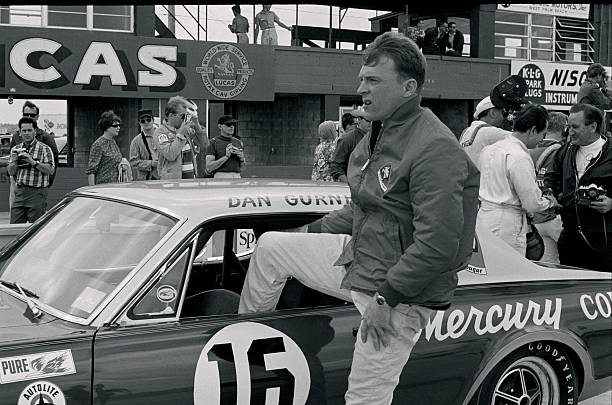
(Photo by Dave Friedman/Getty Images)
Sebring, Florida, March 31, 1967. Dan Gurney getting into the No. 16 Bud Moore Engineering Mercury Cougar before the 4-hour Trans-Am race. Dan qualified fourth but did not finish due to a blown clutch. Dan's teammate, Parnelli Jones (No. 15 Bud Moore Engineering Mercury Cougar), didn't finish the race either with the same clutch malady. The other Shelby American driver, Ed Leslie (No. 98 Bud Moore Engineering Mercury Cougar), finished fifth behind Jerry Titus (No. 17 Shelby American Terlingua Racing Team Ford Mustang), Mark Donohue (No. 6 Penske Racing Chevrolet Camaro Z/28), Dr. Dick Thompson (No. 11 Grady Davis/Gulf Ford Mustang) and Milt Minter (No. 78 Ford Mustang). Titus and Donohue finished on the same lap; everyone else was at least two laps behind.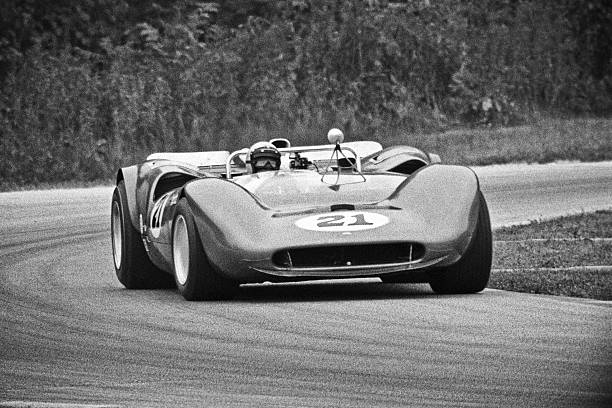 (Getty Images)
(Getty Images)
Elkhart Lake, Wisconsin, September 1, 1968. Mario Andretti in the No. 21 Bignotti Enterprises Lola T70 Mk.3, which was powered by a DOHC Ford. Mario qualified the unsorted machine in eighth position for the Can-Am at Road America, a full four seconds off of Bruce McLaren's pole time; the DOHC V8 Ford just wasn't suited for Can-Am. Denny Hulme and Bruce finished 1-2 in their Gulf McLaren M8A Chevrolets, followed by Mark Donohue (No. 6 Penske Racing Sunoco Special McLaren M6B Chevrolet) in third.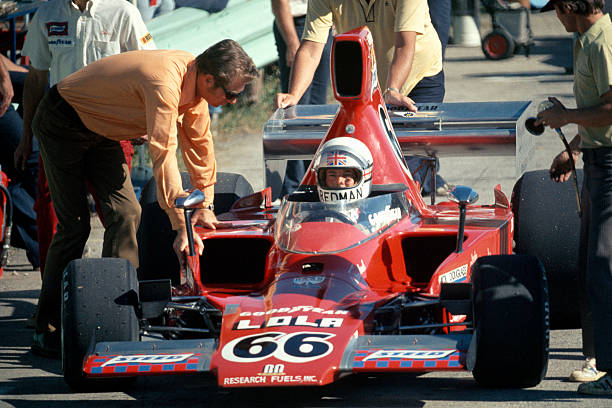 (Getty Images)
(Getty Images)
Elkhart Lake, Wisconsin, July 28, 1973. Brian Redman in the No. 66 Chaparral Cars Lola T330 Chevrolet during practice for the L&M F5000 Championship race. That's Jim Hall looking on. Redman won that round, followed by Jody Scheckter (Trojan T101 Chevrolet) and Eppie Weitzes (Lola T330 Chevrolet). Scheckter won the F5000 Championship that year, but Redman went on to win three in a row in 1974, 1975 and 1976 driving a Carl A. Haas Racing Lola T332 Chevrolet.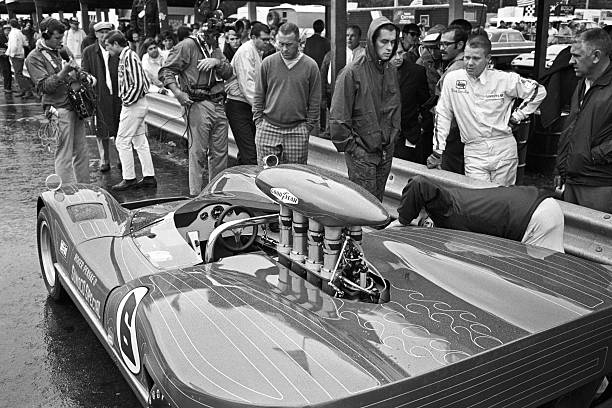 (Getty Images)
(Getty Images)
Elkhart Lake, Wisconsin, September 1, 1968. The morning of the Can-Am at Road America dawned wet and dreary. Here, Roger Penske and Mark Donohue wait for the call to the grid next to the No. 6 Penske Racing Sunoco Special McLaren M6B Chevrolet. Donohue would finish third in the wet race behind Denny Hulme (No. 5 Gulf McLaren M8A Chevrolet) and Bruce McLaren (No. 4 Gulf McLaren M8A Chevrolet). Peter Revson (No. 52 Shelby Racing Co. Inc. McLaren M6B 427 Ford) was fourth, and Jim Hall (No. 66 Chaparral 2G Chevrolet) finished fifth.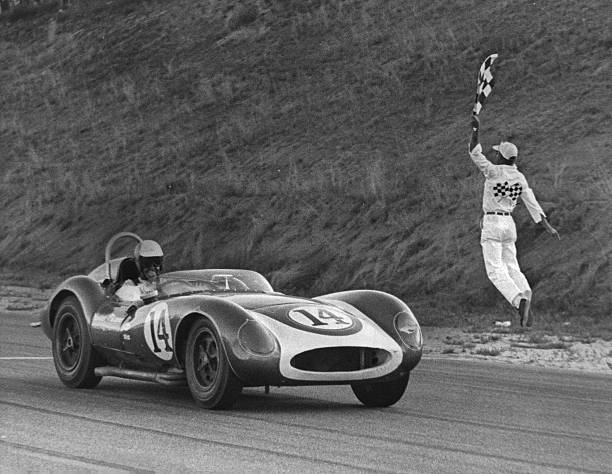 (Photo By Duane Howell/The Denver Post/Getty Images)
(Photo By Duane Howell/The Denver Post/Getty Images)
Castle Rock, Colorado, August 18, 1963. Augie Pabst (No. 14 Peter Hand Brewery Meister Brauser Scarab Chevrolet) delivers the last win for the front engine Scarab at Continental Divide Raceways. The National Open Road Racing Championship race drew 10,000 sports car fans.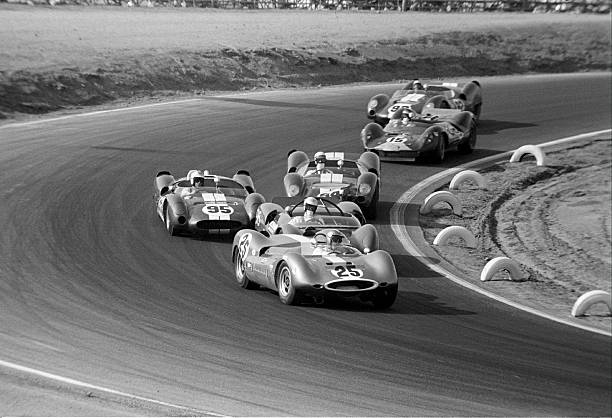 (Getty Images)
(Getty Images)
Riverside International Raceway, October 11, 1964. Augie Pabst (No. 25 John Mecom Racing Genie Mk10 Chevrolet), leads Bobby Unser (No. 96 Arciero Bros. Racing Lotus 19 Monte Carlo Chevrolet), Ronnie Bucknum (No. 95 Shelby American Cooper King Cobra Ford), Parnelli Jones (No. 94 Shelby American Cooper King Cobra Ford), Jim Clark (No. 15 Team Lotus 30 Ford) and Richie Ginther (No. 92 Shelby American Cooper King Cobra Ford) during the L.A. Times Grand Prix for Sports Cars. Parnelli won that day, followed by Roger Penske (No. 6 Chaparral 2A Chevrolet) and Jim Clark.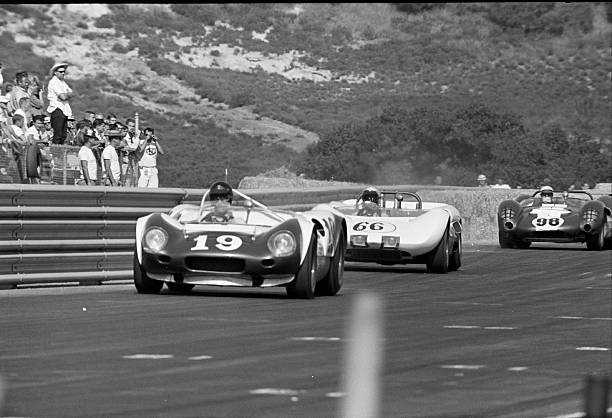 (Getty Images)
(Getty Images)
Laguna Seca, October, 1964. Dan Gurney (No. 19 Lotus 19 B Ford) leads Roger Penske (No. 66 Chaparral 2A Chevrolet) and Parnelli Jones (No. 98 Shelby American Cooper King Cobra Ford) during the Monterey Grand Prix. Jones didn't finish Heat 1 and didn't start Heat 2. Penske and Gurney ran 1-2 in both heats, while Bob Bondurant (No. 96 Shelby American Cooper King Cobra Ford) finished third in both heats.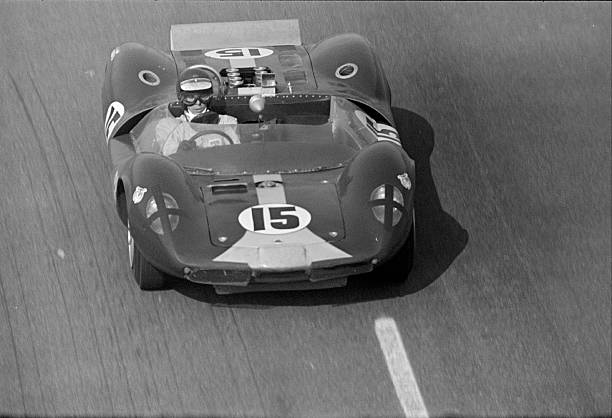 (Getty Images)
(Getty Images)
Riverside International Raceway, October 11, 1964. Jim Clark in the No. 15 Team Lotus 30 Ford during the L.A. Times Grand Prix for Sports Cars. The Lotus 30 Ford wasn't a match for the other machines, but in Clark's talented hands it would finish third behind Parnelli Jones (No. 94 Shelby American Cooper King Cobra Ford) and Roger Penske (No. 6 Chaparral 2A Chevrolet).
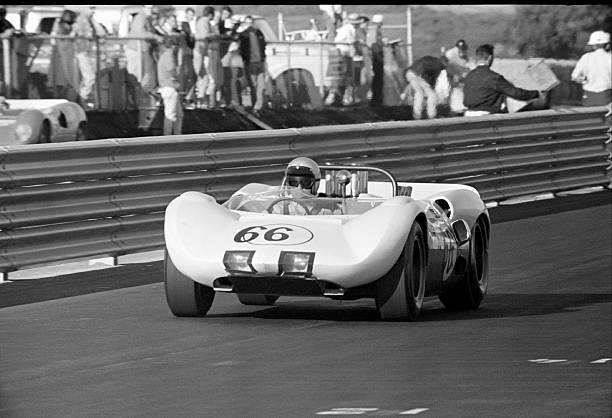
(Getty Images)
Laguna Seca, October 1964. Roger Penske (No. 66 Chaparral 2A Chevrolet) during the Monterey Grand Prix. Penske swept the double-header, with Dan Gurney (No. 19 Lotus 19 B Ford) finishing second and Bob Bondurant (No. 96 Shelby American Cooper King Cobra Ford) third in both heats. People forget what a tremendous driver Penske was in his heyday. He was certainly in the upper echelon of sports car drivers in that era, especially when driving one of Jim Hall's Chaparrals.





